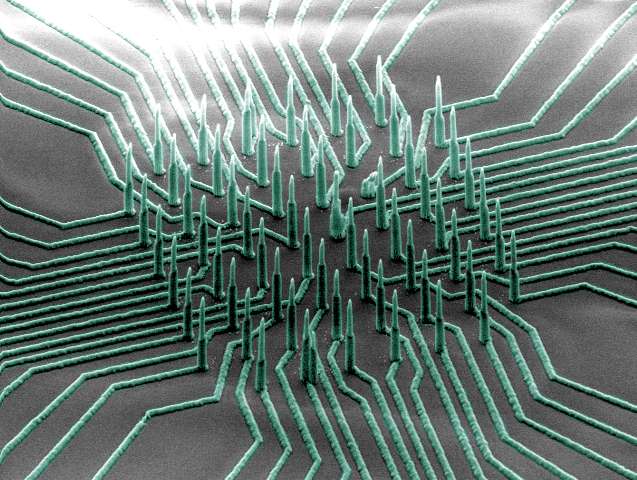_ Department 🔬 laboratory (propagation and expansion of nanochips)
Investigating the performance of nano wires in nano bio chips. Nano bio chip
Researcher and author: Dr. ( Afshin Rashid)
Note: Nano biochips consist of an array of silicon nanowires densely packed on a small chip designed with nickel electrode leads and coated with silica. The nanowires disperse without damaging the cells and are sensitive enough to measure small potential changes of fractions or millivolts in size.
Another feature of nano wires in nano bio chips is that it can separate the electrical signal measured by each individual nano wire. It is nanowires. Generally, the wire is said to be a structure that is extended in one direction (longitudinal direction) and is very limited in the other two directions . A basic feature of these structures that have two outputs is electrical conductivity. By applying the electric potential difference at the two ends of these structures and along their length, electric charge transfer occurs. Making wires in nanometer dimensions is very interesting both from a technological and scientific point of view, because they show unusual properties in nanometer dimensions. The ratio of length to diameter of nanowires is very high.
Silicon nanowires are the most used in nanobiochips, this type of nanowires is non-toxic and does not harm cells. This type of nanowires has shown its greatest use in the field of medicine, such as detecting cancer symptoms, stem cell growth, etc. The human body, like a computer, must have sensors that can warn external warning devices in case of problems and errors or the presence of toxic substances and try to fix it. If it is found, it will give an error message.
To produce flexible and long nanowires, the variable lengths of these nanowires are between 1 to 100 nm or even per millimeter, and in terms of comparison, they are about a thousand times thinner than human hair. The length, flexibility and strength of these nanowires give it special characteristics. For example, being thin and long increases its surface. Therefore, these structures can be used in the design of very fast and sensitive sensors. These nanowires have the ability to produce invisible ultraviolet rays, the light enters the nanowire from one end and starts to shine from the other end. Nanowires pass this light effectively without any loss. And on its way, if it encounters a pathogenic agent or toxic substance, the nanowire starts to glow and creates a very fast warning system, and this can detect the disease earlier and faster than any test.
Nano biochips consist of an array of silicon nanowires densely packed on a small chip designed with nickel electrode leads and coated with silica. The nanowires disperse without damaging the cells and are sensitive enough to measure small potential changes of fractions or millivolts in size.
Researcher and author: Dr. ( Afshin Rashid)
Specialized doctorate in nano-microelectronics





